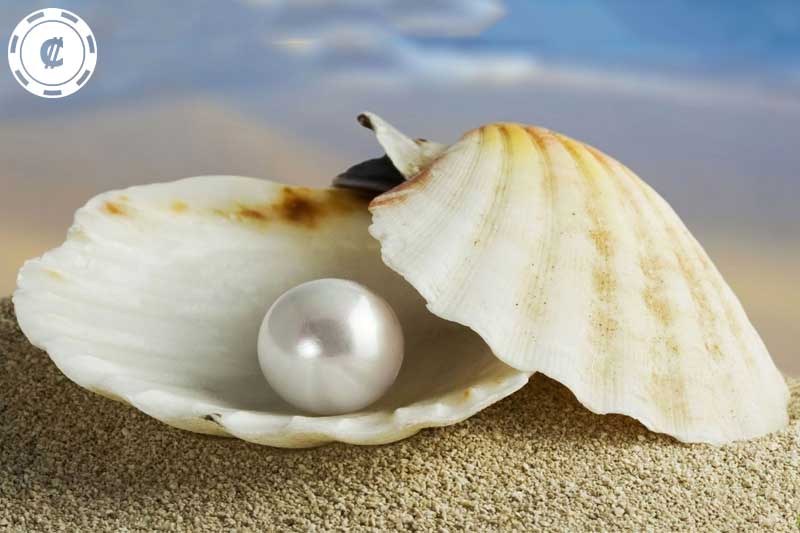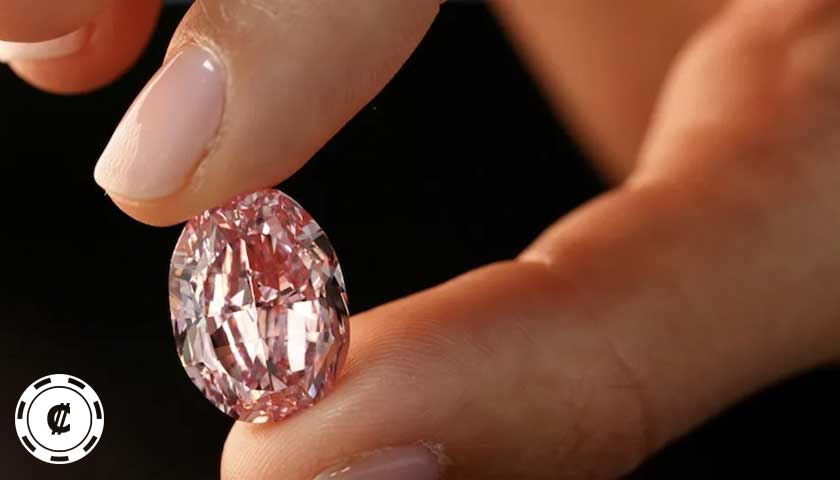About Pearls – History and Introduction
Pearls are organic gemstones that are formed by shelled molluscs; mainly bivalved oysters and mussels. Pearls are made up of nacre (mother-of-pearl) which is mostly aragonite (calcium carbonate) and conchiolin (complex proteins that form mollusc shells). The aragonite microcrystals build up around an irritant. The name “pearl” is said to have originated from the Middle English word “perle”, which in turn came from the Latin word “perna”, meaning “leg”, thought to be due to the ham-leg shape of the bivalve mollusc.
Natural pearls are extremely rare, incredibly expensive and typically small. Therefore people have developed ways to culture pearls, so that these beautiful gemstones can be enjoyed by many. In cultured pearls, some tissue or a mother-of-pearl bead is introduced into the mollusc shell. If successful, this process induces the animal to form a “pearl sac” whose cells secrete a layer of brownish protein called conchiolin over the irritant. This is followed by the secretion of numerous mineral layers of nacre composed of calcium carbonate in thin overlapping plates. Pearls can come from fresh or seawater molluscs. The beauty of pearls is that they can be plucked from the shell naturally beautiful, fully-formed and displaying perfect luster with no need to be cut or polished.
The oldest recorded reference to pearls in history is the 7,500 year-old “Umm Al Quwain Pearl”, which was found in a grave in a place that is now known as the UAE. Before pearls were cultured by man, they were harvested from the Persian Gulf, Sri Lankan waters, fresh water sources in China and the rivers of Europe. Later, Christopher Columbus discovered pearls in South America. When these natural pearls were almost depleted in the early twentieth century, the Chinese and Japanese began to culture pearls and the rest is history. Nowadays, pearls remain a treasured adornment and are cultured all around the world.
Identifying Pearl
Pearls can be identified by their pearly luster and when rubbed gently against the teeth, a slightly rough surface texture can be detected, whereas imitation pearls feel smooth. The surface appearance of natural and cultured pearls is the same, but the density of cultured pearls is usually higher, at approximately 2.73 for most. The only definite way of distinguishing between natural and cultured pearls is to examine their internal structure. Experts use endoscopes to do this through the drill holes of pearls. Natural pearls have concentric internal layers.
Pearl; Origin and Gemstone Sources
Pearls are found and cultured in waters all over the world. Natural sea pearls are found in Australia, Japan, Central America, the Persian Gulf, the Gulf of Manaar (between India and Sri Lanka), the coast of Madagascar, Burma (Myanmar), the Philippines, the South Pacific Islands (including Tahiti and Fiji) and South America.
Natural river pearls are found in Asia, Europe and North America.
Cultured seawater pearl sources include Southeast Asia (such as Indonesia and the Philippines), Australia, China, French Polynesia, Japan, South Pacific Islands (including Tahiti and Fiji) and the Philippines.
Cultured freshwater pearl sources include China and Japan.
Buying Pearl and Determining Pearl Gemstone Value
Pearl Color
Pearls are available in a variety of colors. Colors of pearls include the following: White, pink, silver, cream, golden, green, blue and black. Some pearls exhibit iridescence, which is known as orient.
Pearl Clarity and Luster
The luster of pearls depends on the quality of the nacre. Pearls should have the characteristic shiny pearly luster and their surface should show sharp and bright reflections. The surfaces of good quality pearls are smooth and blemish-free with a suitable layer of nacre to increase durability.
Pearl Cut and Shape
Pearls can be round, oval, pear-shaped or misshapen (baroque pearls). However, the best materials are regularly shaped. The most valuable shapes are symmetrical spheres or symmetrical drops. Pearl sizes depend on the type of mollusc that they form in and they typically range from 2 mm to 16 mm in diameter.
Pearl Treatment
Pearls are often bleached to lighten and enhance their color. In this way, a uniform color can be achieved for beaded necklaces.
Famous Pearl Gemstones
“The Hope Pearl” is one of the largest fine pearls ever found. It weighs 450 carats and is currently on loan to the British Museum of Natural History, London. It is a natural seawater drop-shaped blister pearl. It is named after its former owner; Henry Philip Hope, who also owned the Hope Diamond. In 2005, the Hope Pearl was reunited with the Hope Diamond at an exhibition at the Smithsonian National Museum of Natural History, Washington D.C.
The largest recorded pearl was found in 1934 near an island of the Philippines. It is known as the “Pearl of Lao Tzu”. It is a non-nacreous pearl (lacking a surface layer of calcium carbonate) from a giant clam and weighs 6.4 kilograms.
A remarkably large natural pearl of 50.56 carats, known as “La Peregrina” sold for $11.8 million in 2011. It has been worn by both royalty and actress, Elizabeth Taylor.
“The Baroda Pearls”, which were part of the Maharajah of Baroda’s necklace, are a double strand of 68 natural pearls that sold for $7 million in 2007.
Pearl Gemstone Jewelry Care and Cleaning
How to clean your gemstonesAlthough pearls are relatively soft, with a Mohs hardness of 2.5 to 4.5, they are extremely compact, which makes them durable and resistant to being crushed. Do not expose pearls to harsh chemicals such as household cleaning fluid or acid. It is a good idea to take off pearl jewelry first and put them on last when dressing, so that these precious gems are not sprayed with perfume or hairspray. If pearls are worn as bracelets or rings, they should be limited to occasional wear, to minimize scratches. Gently wipe them with a soft cloth after they are removed. This will preserve the luster of your pearls, which can be dulled by perspiration. To clean your pearls, use a mild soap and mineral water or distilled water. Tap water often contains chemicals such as chlorine, which can damage pearls. Do not use brushes, ultrasonic cleaners or steamers, which can cause damage. If pearls are stored in a safety deposit box, a glass of water should be placed with them to prevent them from drying out and developing surface fractures. Store pearls separately from other gemstones to prevent scratches, and do not store pearls in direct sunlight, which can cause yellowing. Pearls should be kept away from heat, which can cause surface fractures. If pearls are on a beaded necklace, they should be restrung every year or two to prevent fraying and consequent loss.




